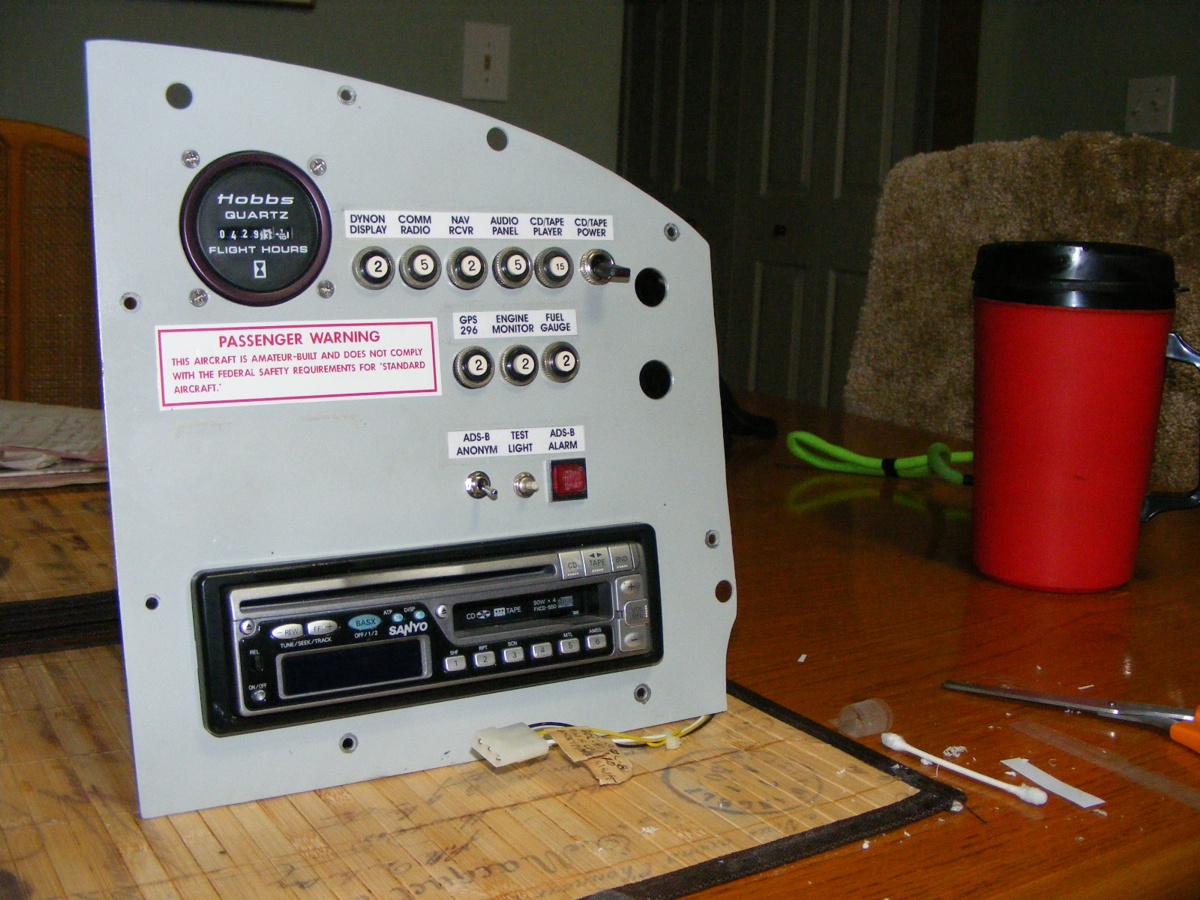
ADS-B Out for Enterprise · · PAGE 451.
June 29, 2019: Saturday at the Airport
starts with a pair of photos from last night on my kitchen table. The
panel has been cleaned up with some nail polish remover that is 98%
Acetone. I made sure not to use too much on a cotton swab as it could also
take off the gray paint. I had to power up my old IBM ThinkPad computer
since it has all the appropriate fonts and the Corel Draw file that created
these original labels over 14 years ago. The three labels for the ADS-B
switches and LED enunciator in case of ADS-B failure are brand new. When I
tried to peel off the old GPS 196 / Engine Monitor / Fuel Gauge label, the clear
tape came off leaving the white printed paper in place. The clear adhesive
tape came off with a dry powder on the back side that covered the paper
label. In 14 years since these labels were first installed, some of the adhesive
has been absorbed by the paper keeping the labels stuck to the painted
panel. I tried a cotton swap with acetone to remove the old label with no
good result Since the new labels are exactly the same size, I taped them
over the two older labels after removing the "expired" clear tape. As
you can see below, this worked out very well.

The RED LED warning light had white paint letters that said LOW BATT when I got it. I used a Q-Tip swab with acetone to remove the white paint. The slick finish of the RED LED plastic became frosty and rough after using the acetone. I used a piece of Scotch Brite cloth to see if I could restore the shine to no avail. The photo above shows one of the pieces of old clear tape curled up by the Q-tip swab with no adhesive remaining. There are only three wires from the GDL-82 to the front panel to operate the ANONYMOUS switch option, the TEST LIGHT for the LED, and the ADS-B failure ALARM LED light Pin 5 from the GDL-82 is used by the toggle switch to disable the ADS-B identity data when a 1200 squawk code is transmitted by the GPS-327 radar transponder. This switch does nothing if any another squawk code is transmitted for Class B, C, or D airspace entry. The test light button is a single-pole, double-throw switch with its common pole connected to the negative terminal of the RED LED light. The normally-CLOSED pole of the momentary switch is connected to PIN 10 on the GDL-82. That pin is grounded when there is a GDL-82 failure alarm. I can test this feature when I connect my computer to the USB port on the GDL-82 and run the install program. PIN 14 is a GROUND PIN from the GDL-82 that is routed to the panel to the normally-OPEN pole of the push-button test light switch. Pushing the switch button grounds the negative LED wire to briefly illuminate the LED manually. The positive LED wire is connected to the fuel gauge circuit breaker.
Here is the view behind the small panel. The copper bus bar gets +12
volts DC from the AVIONICS MASTER SWITCH. Most of the circuit breakers here
are part of the avionics bus. The exception is the 15-ampere circuit
breaker for the CD/TAPE PLAYER which connected to the main battery terminal bus
through a large toggle switch seen in the photo above. Since the tape
player is used only on special occasions, the switch prevents the internal clock
and control circuits from draining the battery. That switch has an
internal LED that illuminates only when the switch is in the POWER position
(UP).
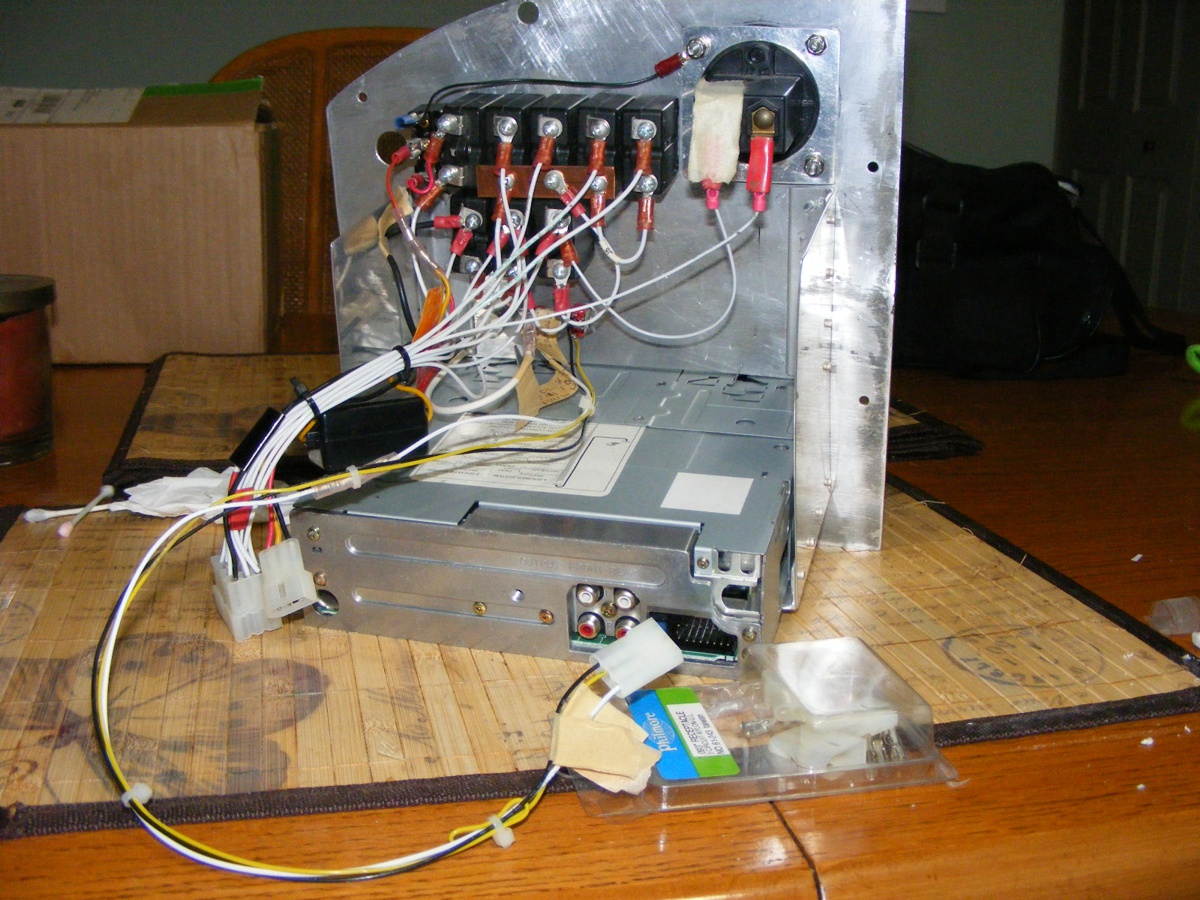
The three wires for the GDL-82 pass through a MOLEX connector with BLACK
wire for GROUND from PIN 14 of the GDL-82, the YELLOW wire from PIN 5 for
anonymous data mode, and the white wire from PIN 10 for the failure alarm.
The large 12-pin MOLEX plug carries all the circuit breakers to the various
avionics listed in the labels on the front of this panel. The other
existing 3-pin MOLEX connector is for the DC power to the tape player
unit. It also plays audio CD's. The unit has an AM/FM radio, but
there is no antenna for it as it is not practical. At altitude, there
would be too many radio stations received to pick out just one of them. I
tried out an AM/FM radio from the top of Brasstown Bald Mountain, the highest
point in North Georgia in 1971 from an elevation of 4,784 feet. The
results were bad from too many signals.
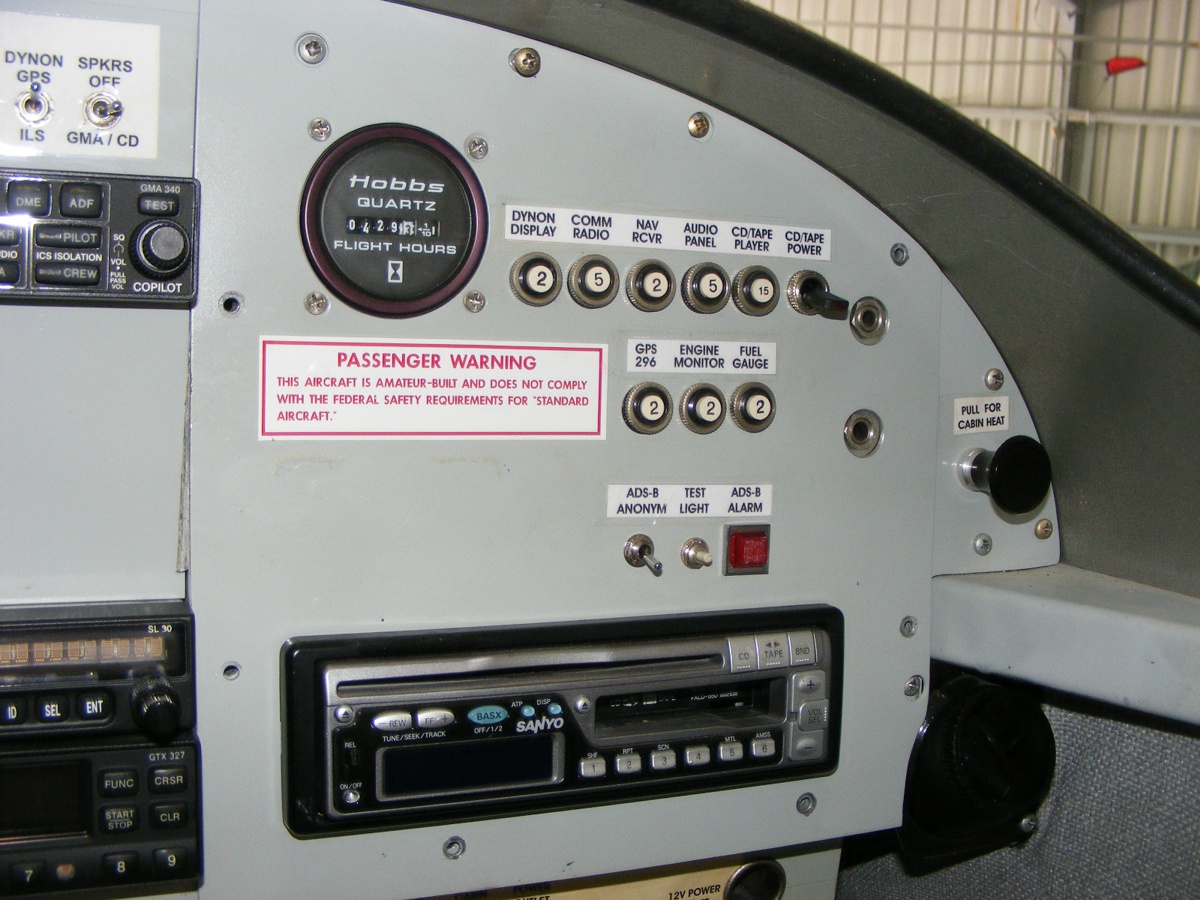
The photo above was taken at the Rockledge Airport on Saturday, June 29, 2019. The GDL-82 unit is now ready for testing. The airplane must be outside the hangar to receive GPS signals for internal GPS for the GDL-82. I put the panel in two times today to be sure I had clearance for all the wires that connect to the circuit breakers and switches in this panel. My GPS 296 receiver RS-232 data output is only connected to the DYNON display unit and the wing leveler to keep me on course for cross country flights.
June 30, 2019: I went out to the
airport on this Sunday to do the cylinder compression tests as part of my annual
inspection. When I got there, realized I could not swing my propeller due
to the crowded conditions in the hangar as seen in this cell phone photo below.
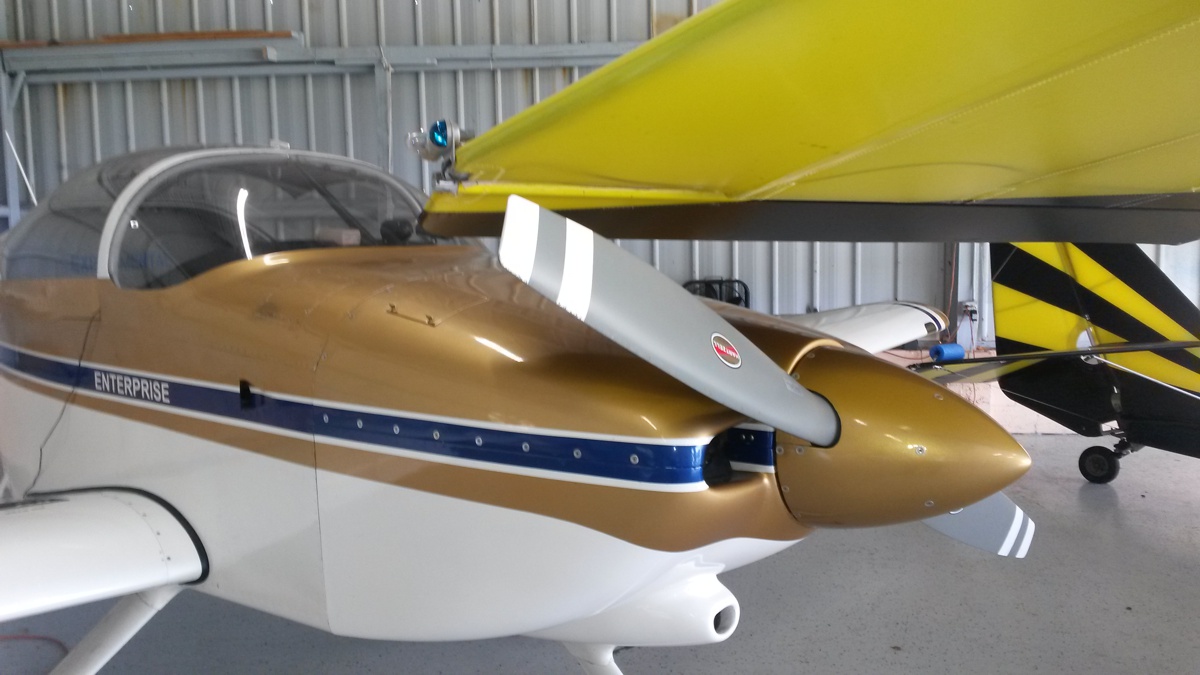
Why not move the offending airplane you say? This amphibian was
getting new tires a few days ago when bad wheel bearings on this left landing
gear were discovered. The new bearings are expected to arrive in the week
ahead. Bill says he should have them installed by Wednesday, July 3.
He will then move this airplane to another hangar to give me the room to
complete my annual inspection.
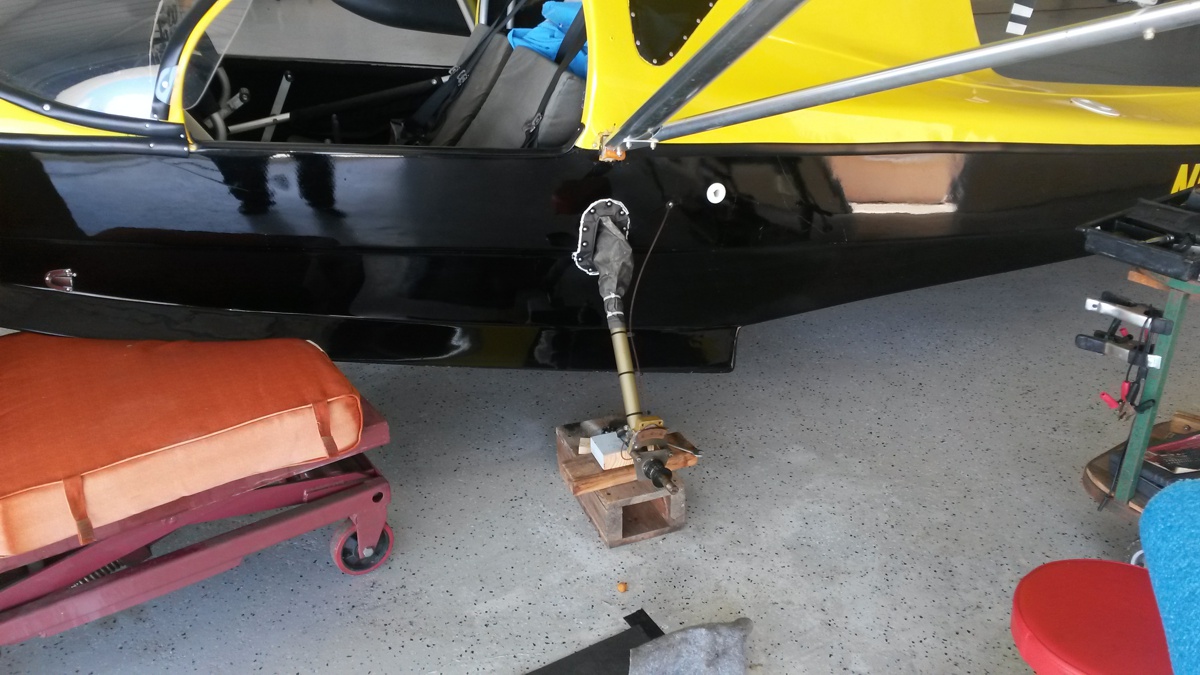
Since I was already on the airport and my airplane needed to be cleaned, I
used up my remaining Favor furniture cleaner and some Viva paper towels to clean
as much as I could. I will come back with two cans of cleaner and another
roll of paper towels for next time. The fuselage forward of the windshield
was cleaned along with the right wing, right side of the fuselage, and both
elevators and the horizontal stabilizer.
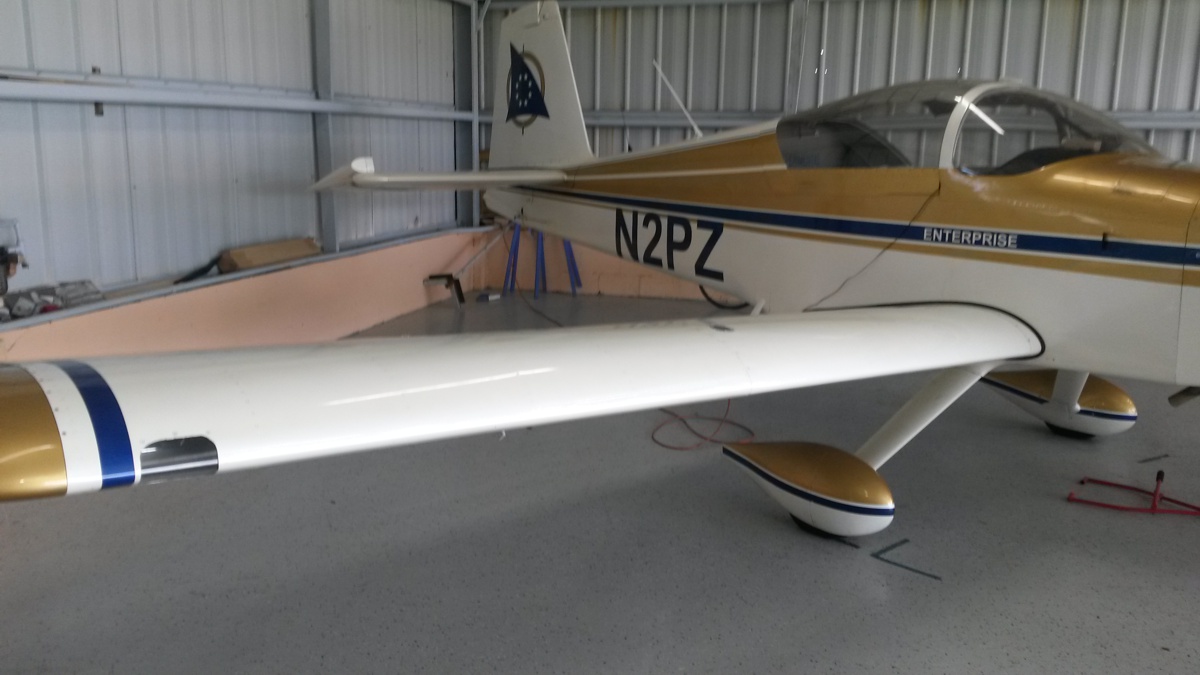
July 3, 2019: It is Wednesday, one day before our Independence Day celebrations across our country. I called Bill and discovered he is out of town and will not be back until next Monday. No work can be done on my airplane until the hangar is cleaned up. I get a very long weekend without any work on my airplane. The airplane would be moved out front before my next work session on Saturday, July 13.
Annual Inspection and ADS-B Out Flight Test.
July 13, 2019: I pulled the airplane
out of the hangar far enough to get some GPS satellite signals for the ADS-B
transmitter which has its own built-in GPS receiver. I hooked up my
computer to the USB output from the Garmin GDL-82. The setup program
was limited to ground operation testing. It was enough to tell me it was
working as much as it could on the ground. I used my 12-volt DC power
supply to try keeping the aircraft battery from being discharged while I was
running the GTX-327 radar transponder and the new GDL-82. I did not have
enough current from my old power supply. The result was evident when I
could not get the engine to turn over with the battery discharged.
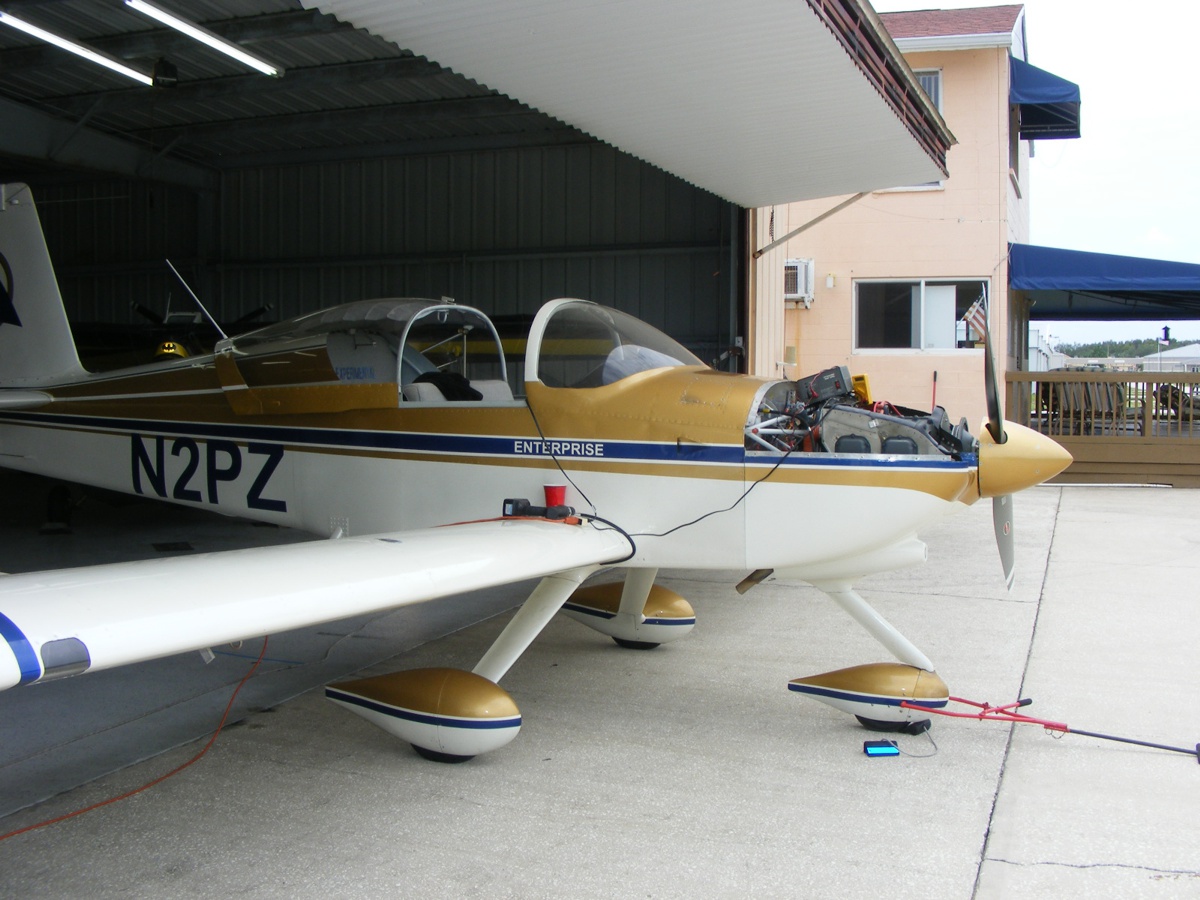
I was checking the compression of the engine cylinders early in the day
inside the hangar. The number one cylinder was leaking when the engine was
cold. Consider that my engine has not been operated since January and
needs to be run to get oil circulated everywhere and help the valves and rings
to seal for a proper pressure test. I got my airplane out on the ramp to
attempt an engine start with no success. I connected a proper battery
charger to my battery with the charging current set to 12 amperes for about an
hour to get the battery up to "full" charge. The bottom half of
the cowling had been removed to allow me to remove all four aviation spark plugs
for the compression tests. The engine started after priming and smoothed
out quickly. I ran the engine about five minutes while monitoring the
charging current from my 60-ampere alternator and everything looked good.
I shut down the engine and restarted it easily. The Hobbs meter
added 0.1 hours on the ground. A few rain drops fell during this time and
it was time to put the airplane back in the hangar. I removed the
aviation spark plug from the number ONE cylinder and the pressure plug test was
normal again. I put the spark plug back in number ONE and the cowling back
in place before leaving the airport. The airplane was now ready to do the
test flight tomorrow. My annual inspection was complete except for the
flight test of the ADS-B out transponder.
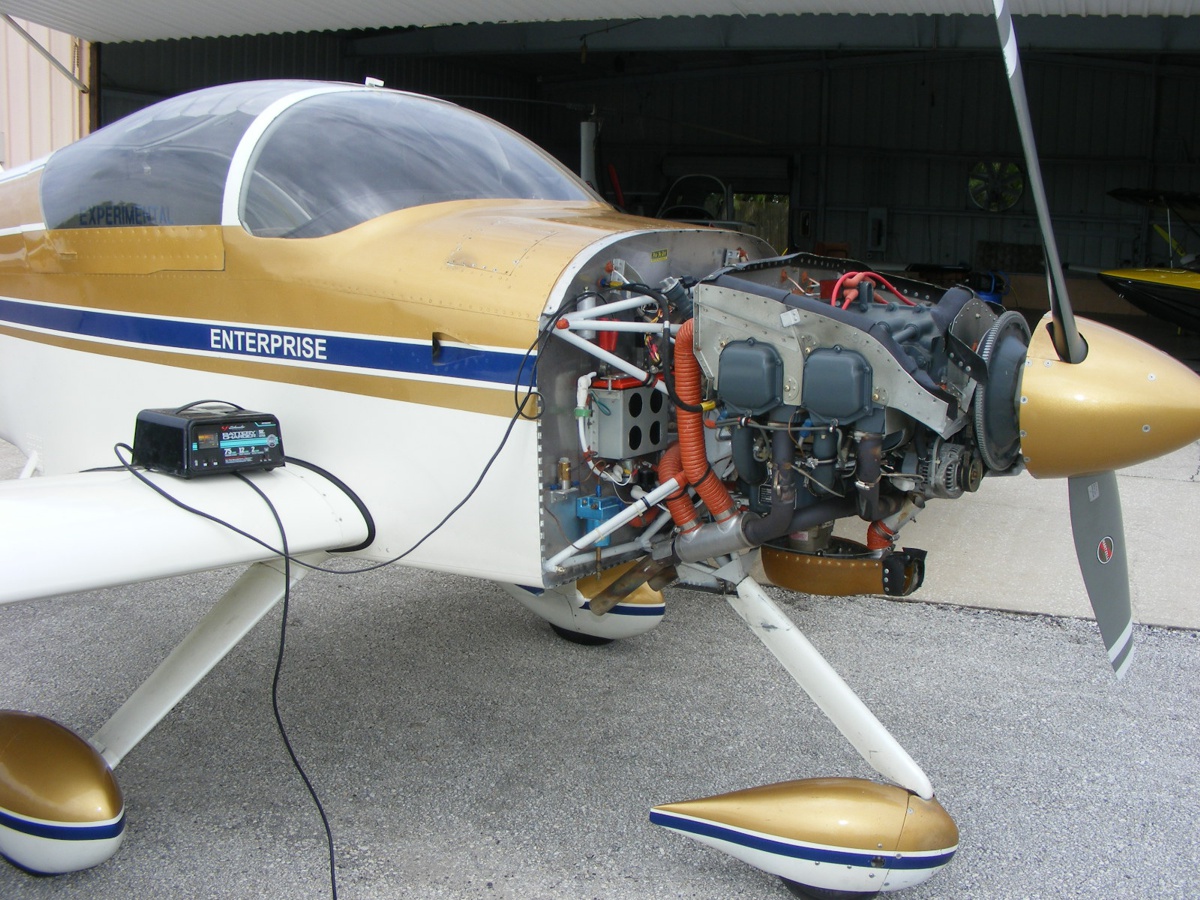
July 14, 2019: French Independence Day
is today, known to them as Bastille Day. For me, my first flight in over
six months was my independence day. Engine start was at 9:50 AM when I
flew over to the Umatilla Airport to top off the fuel tanks at 11:00 AM. I
noticed the heavy equipment is preparing a new taxiway the full length of the
runway and some space for more hangars.
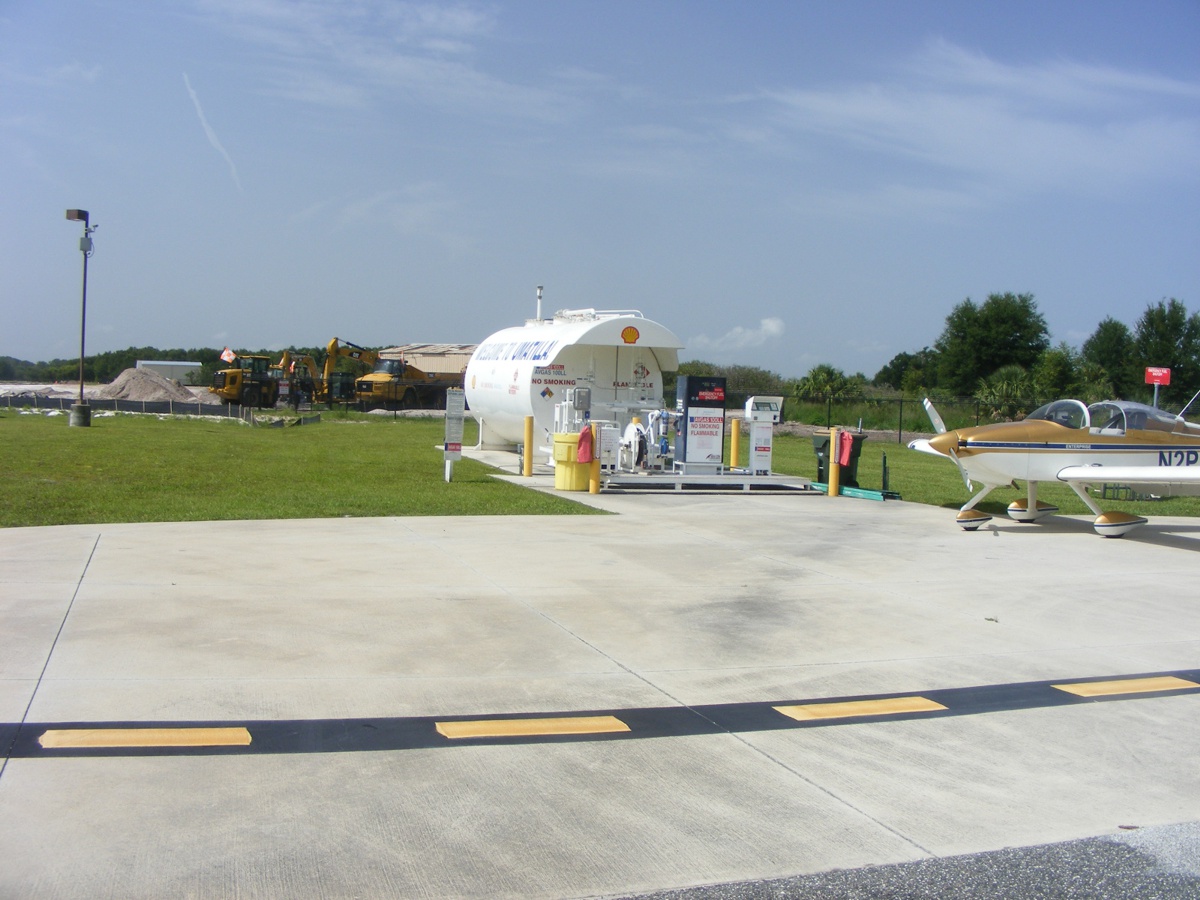
Engine start was at 11:11 AM for the return trip. I took this photo
after takeoff and climb up above pattern at 11:17 AM from 1,500 feet MSL before
heading back to Melbourne. This photo was processed to remove some of the
haze condition. I was looking at the date and time stamp from the camera
and discovered it had not been reset to Daylight Savings Time. The GPS
time from the ground track data points was used to confirm my takeoff and
arrival times. My camera internal clock was reset as I was working on the
this web page.
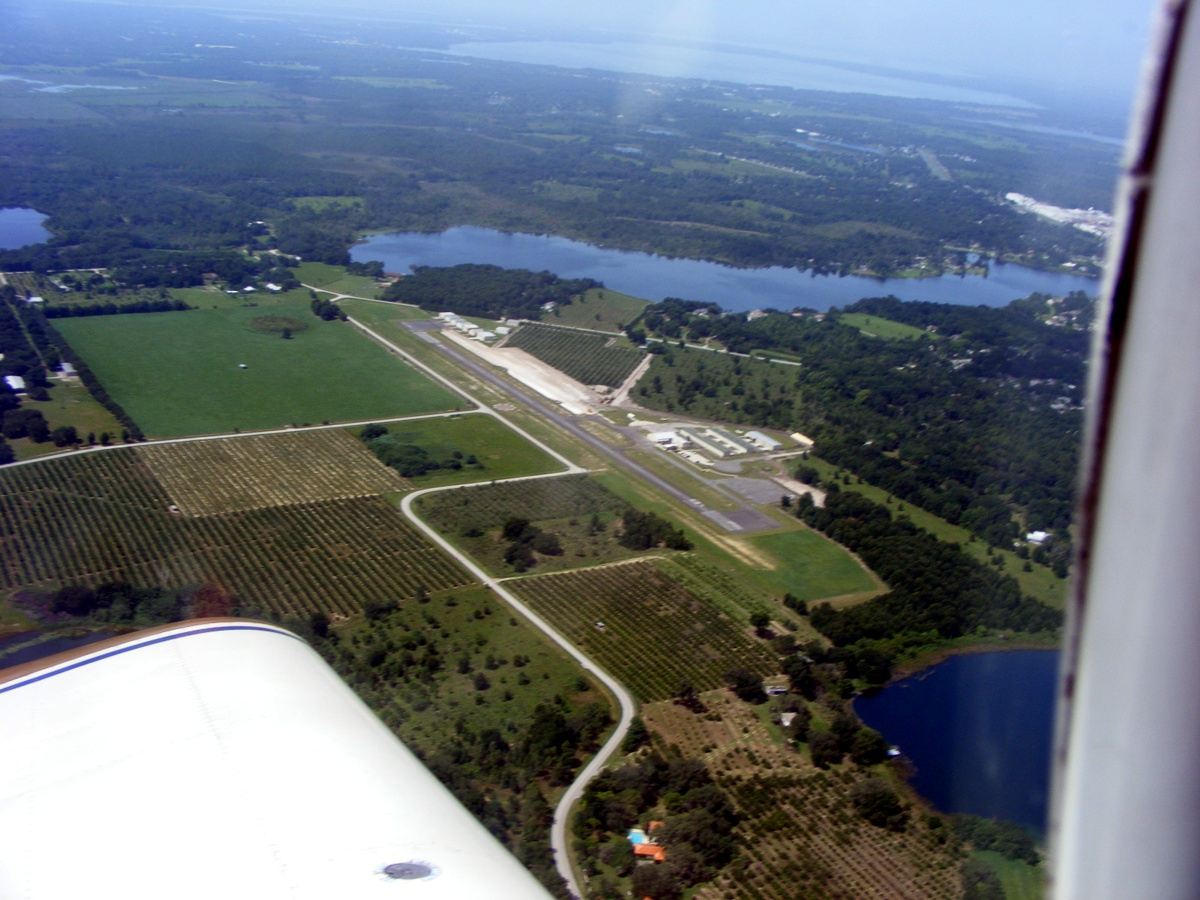
I flew back over to the Melbourne area to discover the control tower was busy when I flew over the top at 5,500 feet MSL going south toward Valkaria Airport (X59). After passing over the Melbourne Airport going south, I descended to 1,500 MSL to fly over the Valkaria Airport. One other airplane was turning crosswind after departing runway 10 East of the runway while I was turning right base for runway 10 from the West end. A quick "bounce and go" and I was back in the air. The other pilot asked me about my type of experimental airplane since I made my call on the radio as "Experimental November TWO Papa Zulu." I told him my Van's RV-9A has been flying over 14 years. He said it looked familiar. I then told him the paint job is an adaptation from a 1966 Piper Comanche B model. He said that must be why it looked familiar. I did not take any photos near Valkaria Airport.
Back in south Brevard County near home, I took two photos
of the work on the housing development north of my house. I am flying west
in these two photos.
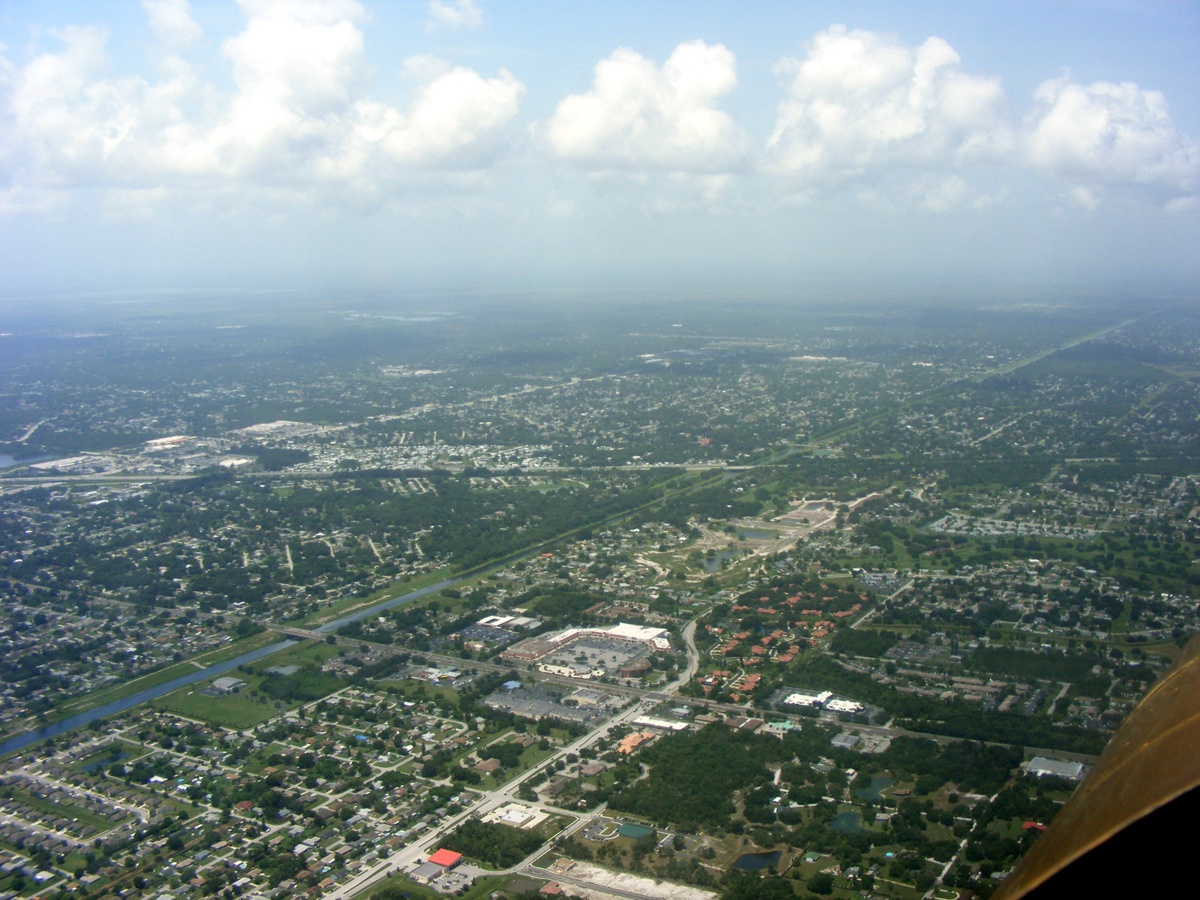
This image came from a second photo as I flew in a westerly direction
south of the Melbourne Class D airspace. This image has been cropped for
better visibility of the target area. It has also been altered to increase
the contrast.
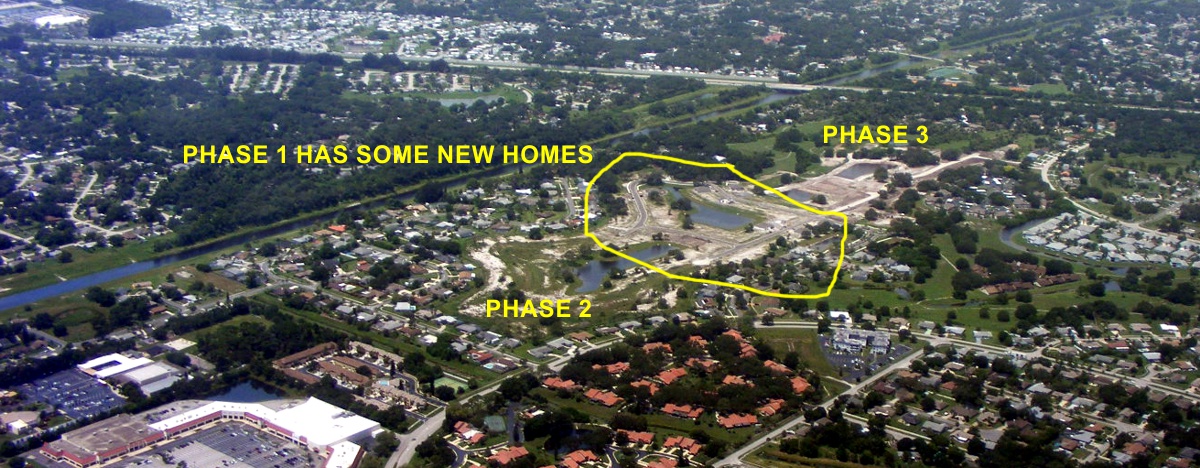
My northbound flight over the Melbourne Airport was at a time when the tower controller was not so busy. I asked him if he could see my ADS-B transponder. He said they do not normally monitor that frequency at 978 MHz. He took a couple of minutes to check the frequency and confirmed my unit was working properly. That made my day. I flew back to the Rockledge Airport and put the airplane in the hangar. I also cleaned off my dirty finger prints from having the cowl off yesterday. The dirt on those parts of the airplane that were not cleaned on July 3 were also addressed with my Favor furniture polish and Viva soft paper towels.
Here is the GPS ground track for today's flights. When I first took
off from Rockledge this morning, the Melbourne tower controller suggested I
contact Orlando Approach for my ADS-B output test. I was too far away for
the test and agreed to fly around the Class B airspace going to Umatilla.
You can see the turn from west to north to the left of Titusville in this map
below. I heard the jump plane call as I was passing Arthur Dunn Airport on
the return trip. I was west of I-95 going north and out over the edge of
the Indian River Lagoon on the way south. The jumpers stay over the
airport when they are coming down from 14,000 feet MSL. That airport is
located between MIMS and TITUSVILLE.
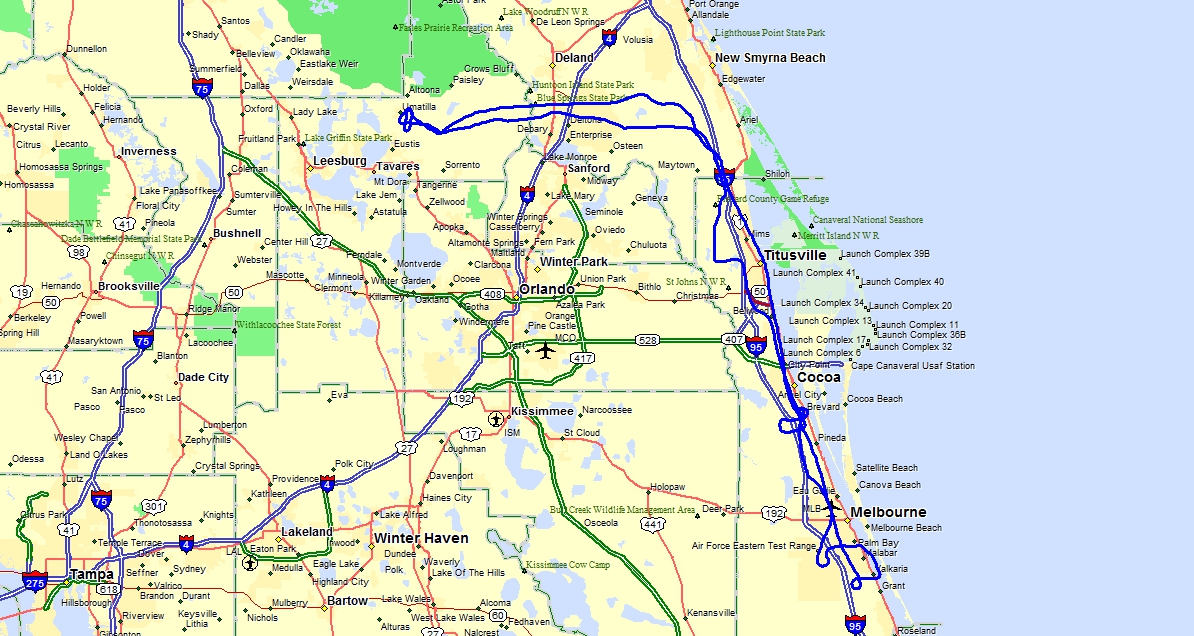
The Hobbs meter added 2.3 hours today to bring the total time since new to 431.7 hours.
| CLICK HERE for PAGE 452 | Return to MAIN MENU |